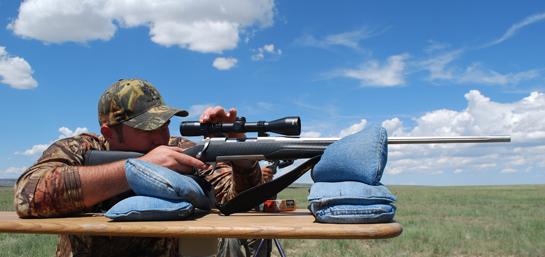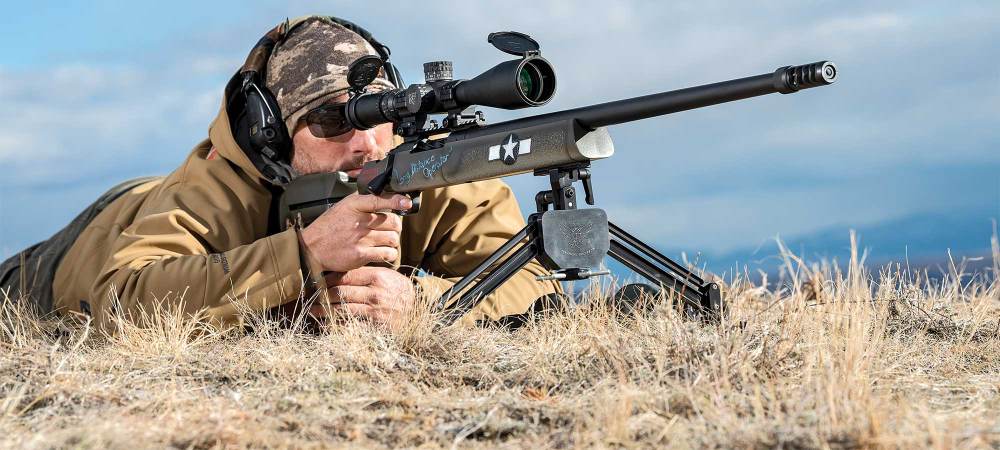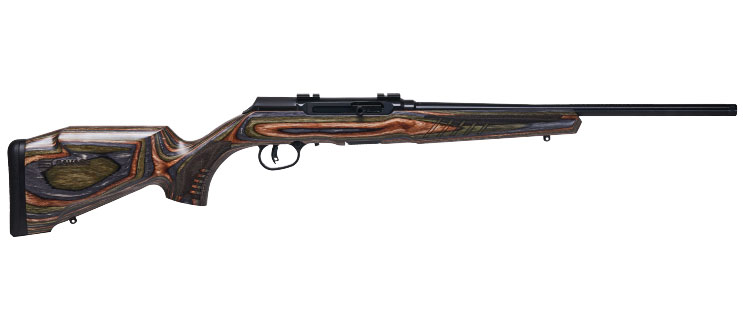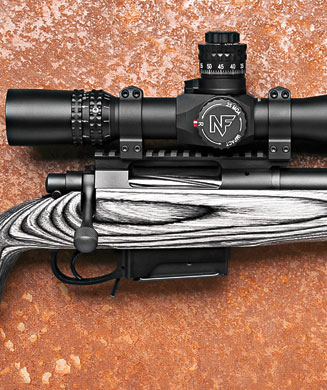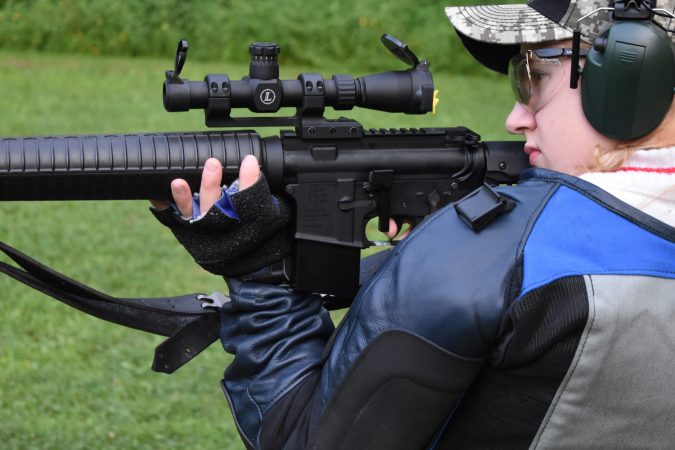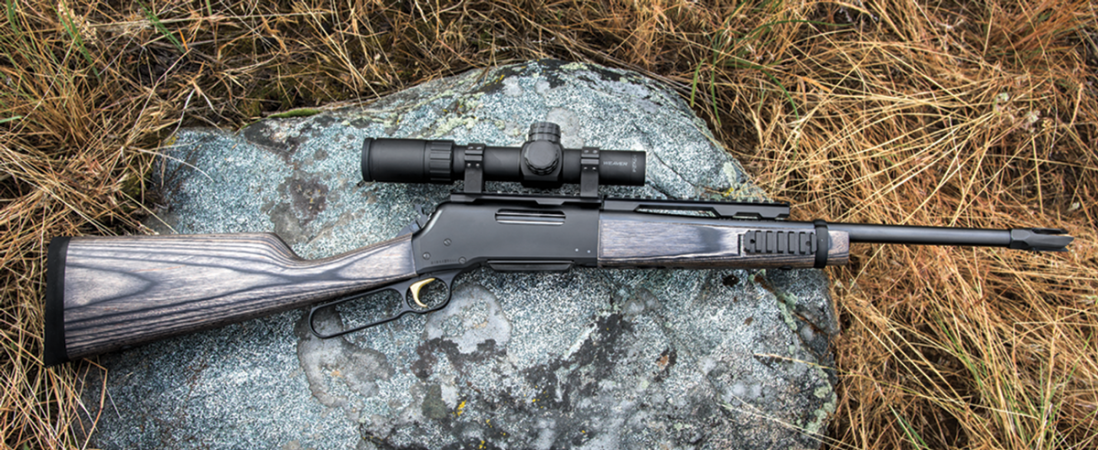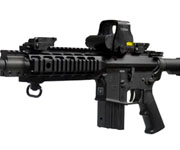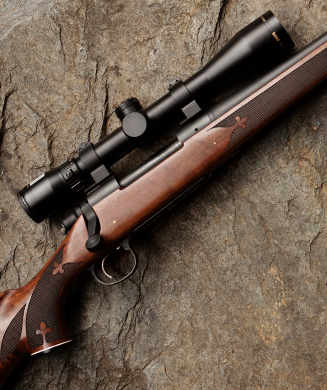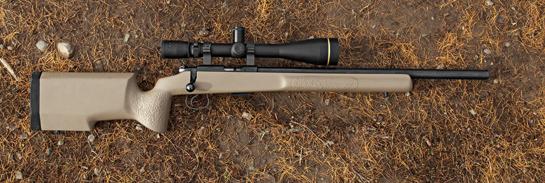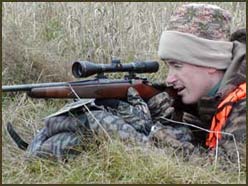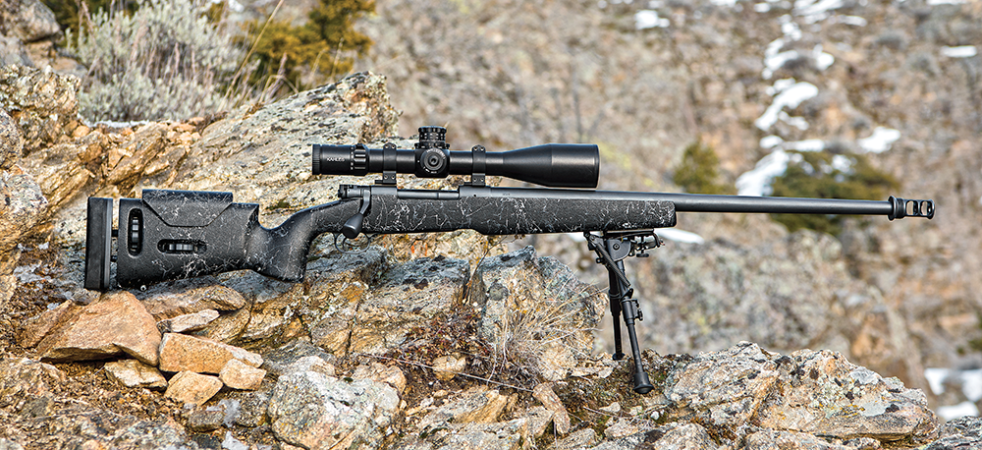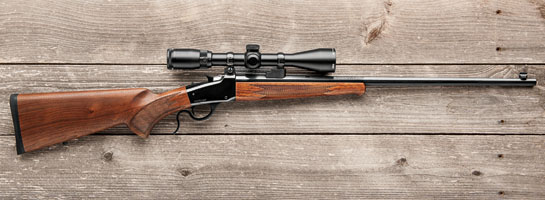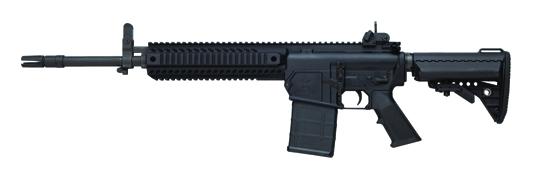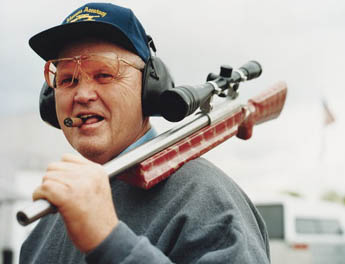We may earn revenue from the products available on this page and participate in affiliate programs. Learn More ›
In the world of high-performance firearms, few guns hold a candle to the Anschutz 1827 F Bionic biathlon rifle. Not only is it the world’s best biathlon rifle, it is one of the most advanced firearms in the world.
The term “purpose-built” is overused in the shooting world, but it perfectly captures what goes into a top-level biathlon rifle. Every bit of gear on these specialized tools is designed to survive the rigors of ski racing while being light enough to transport easily on the competitor’s back. And, of course, they have to deliver pin-point accuracy while the shooters strive to keep their heart rate and breathing under control. The reason I’ve singled out the Anschutz 1827 F Bionic is because Anschutz rifles utterly dominate the sport. Roughly 95-percent of biathletes use 1827s.
Though the sport is woefully underappreciated in the United States, it is one of the top winter activities in Northern Europe and Scandinavia where competitions draw large crowds and televised coverage. But we in the U.S. are about to get our once-every-four-year biathlon fix thanks to the upcoming Winter Olympics that kick off in Beijing on February 4th. While most people probably know that biathlon involves racing on skis while making periodic stops to shoot targets, it’s safe to say that the majority of Americans don’t know the details of how the races are conducted or what goes into the rimfire rifles that the competitors use.
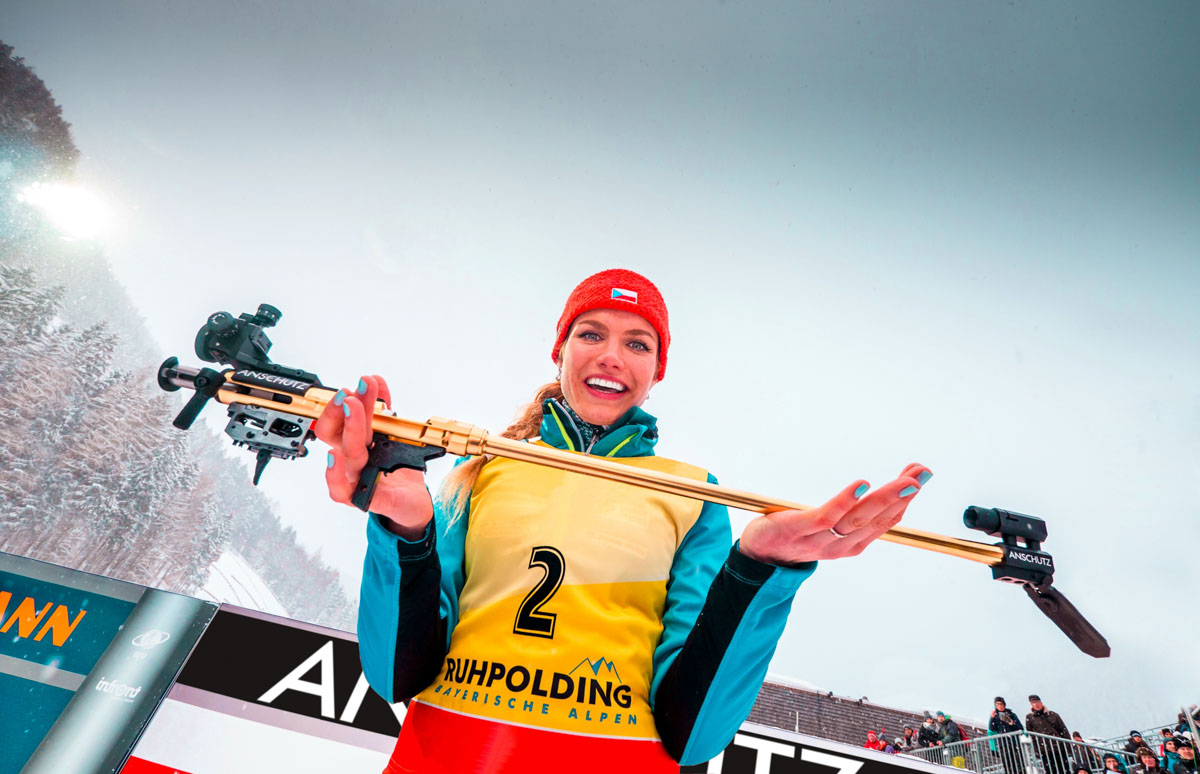
Biathlon Rifle Anatomy
The rifles and ammunition used in Olympic biathlon competitions must conform to the rules set out by the International Biathlon Union (IBU). These rules dictate things like maximum and minimum rifle weight, the dimensions of the cheek riser, the width of the slings, the distance between the rifle bore and the bottom of the lower edge of the fore-stock, trigger pull weight and so on.
Key Biathlon Rifle Specs
- Caliber: .22 LR
- Weight: 7.59 pounds (3.5 kg) minimum rifle weight (excluding magazines and ammunition)
- Trigger Pull: 1.1 pound (.5 kg) minimum break weight
- Sights: No magnifying sights allowed
- Magazine capacity: 5 rounds maximum
- Cheek Piece: Cannot be more than 1.57 inches (40mm) thick
- Slings: Cannot exceed 1.57 inches (40mm) in width
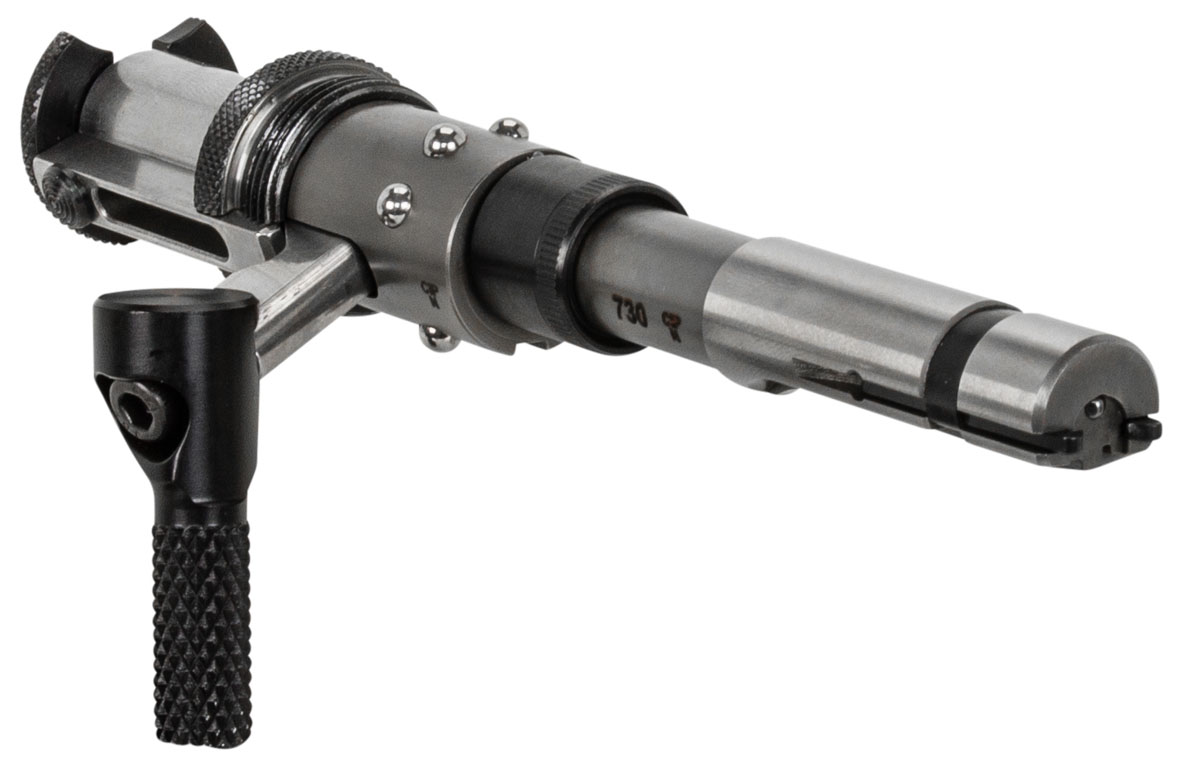
Anschutz 1827 F Action
For a long time, straight pull actions have dominated in biathlon and the Fortner action that Anschutz uses is the most popular. Named for Peter Fortner, who designed the action back in 1984 and is the reason for the “F” in the 1827 F designation, it uses a series of seven ball bearings that lock the bolt into the receiver when in battery.
The action is cycled with two digits on the shooting hand, the index finger and the thumb. The index finger flicks the bolt handle backward and then the thumb pushes forward on the back of the bolt itself to chamber a round. The shooter doesn’t need to break position to do this and can reload the rifle in under one second. One huge advantage to this system is that all the forces exerted on the rifle are in line with the barrel. The straight, forward-and-back motion helps the shooter stay on target when cycling the action.
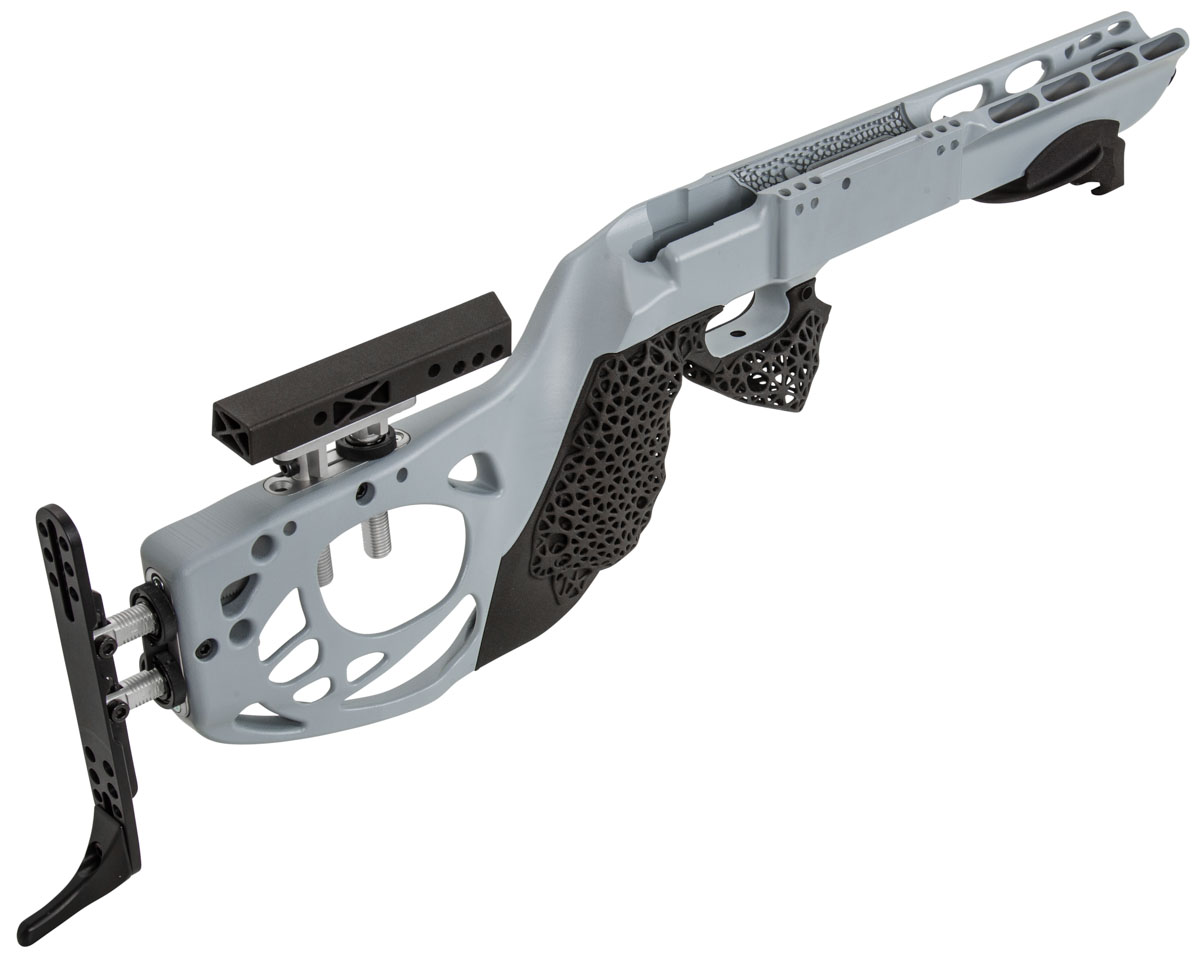
Anschutz 1827 F Stock
The stock design on the 1827 F Bionic is the most significant upgrade over the 1827 F model. It takes advantage of advances in 3D printing technology to create a custom fit for the shooter and incorporates a new bedding system.
The two customizable elements on the stock are the grip and the hand support, also known as the metacarpal support. Anschutz is working with Umlat, an engineering design firm, that prints grips and supports that match the shooter’s hands. The shooter starts the process by adding silicon paste to a mold of the grip and support and impressing their handprint into the material and then shaving excess paste away until the grip is how they like. That form is then used to print the piece that attaches to the rifle. The metacarpal support is used when shooting the rifle from the standing position. The shooter rests the support on the back of their non-firing hand to steady their aim.
The rest of the stock adjusts every which way as well to customize the fit. The cheek piece can be raised, lowered, and canted. It also has holders for individual spare .22 LR cartridges in case the shooter experiences a malfunction in competition. The butt plate, with its distinctive hook at the base, moves in and out to change length of pull, and shifts up and down.
The stock’s fore-end accepts hand stops of different sizes based on the shooter’s preferences. The hand stop is employed when shooting from the prone position. The fore-end also has four magazine holders that use strong magnets to keep the five-round magazines from falling out.
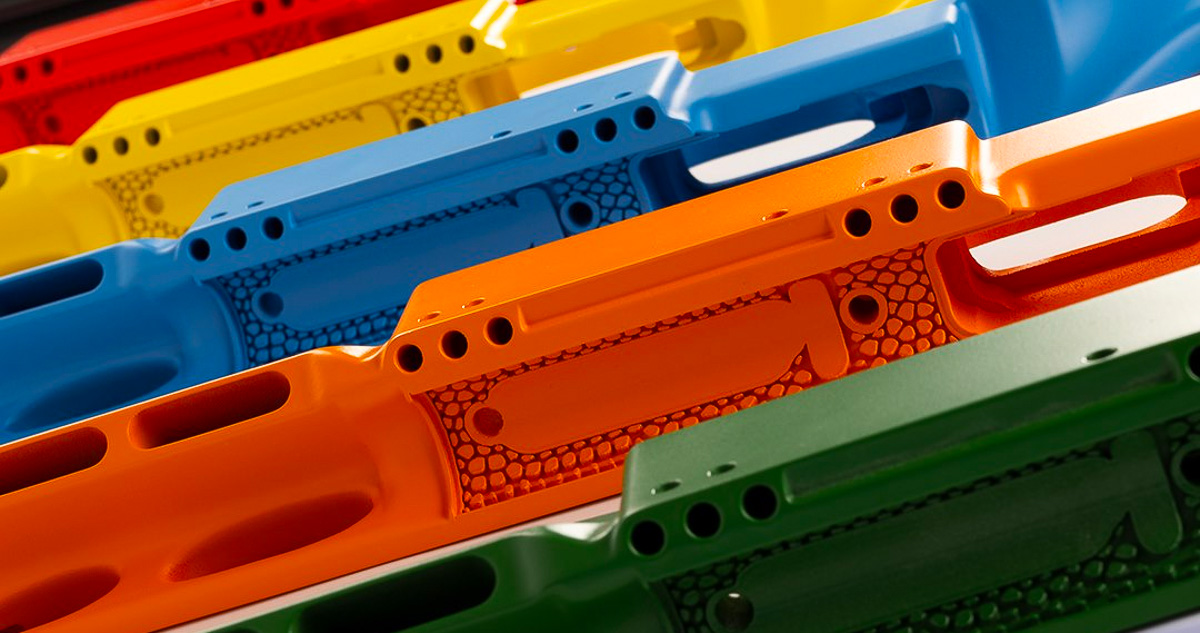
The bedding system is ingenious as well. The inner surface where the action contacts the stock has a honeycomb pattern engraved into it. Those recesses keep the epoxy used as bedding compound more firmly connected to the stock, which is important given the cold temperatures that the rifles are subjected to.
Before the Bionic model came out, the stocks on the 1827 Fs were made of an attractive, but plain, wood. Now they can be had in a variety of vibrant colors, showing that biathletes can party as well as they shoot.
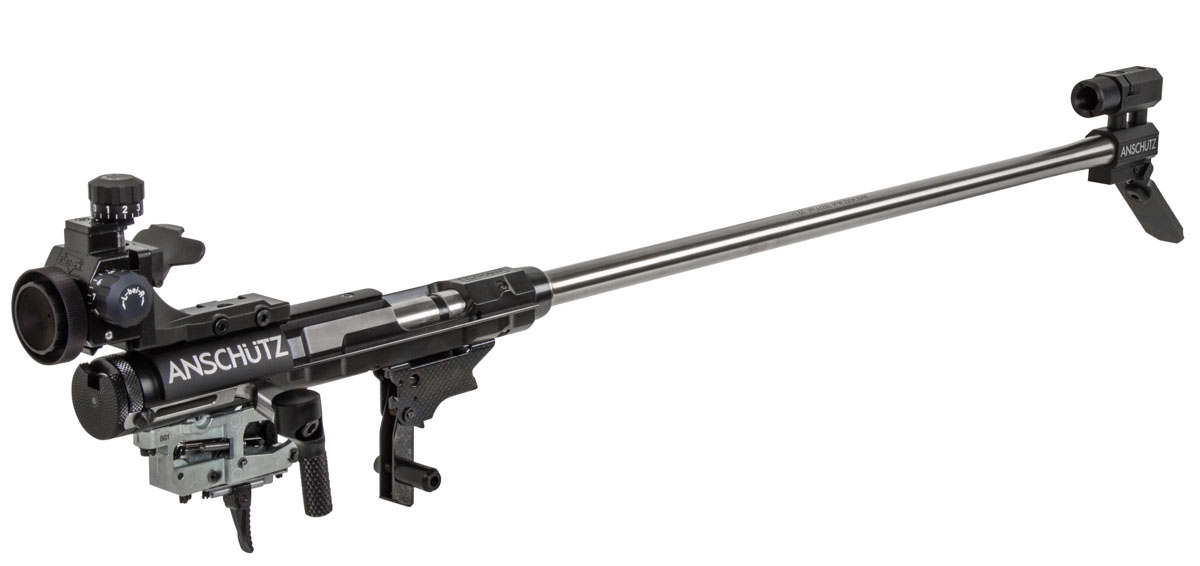
Anschutz Barrels
Anschutz is tight-lipped about how they manufacture their barrels. But the results speak for themselves given the consistency with which their rifles dominate the podiums in competition. The accuracy standard for their biathlon rifles is to group 10 shots within 17mm at 50 meters. That equates to a .669-inch group at 54.6 yards. Great accuracy from any rimfire, but here’s the kicker. To pass muster, the barrels must deliver that accuracy at -20 degrees Celsius, which is 4 below zero Fahrenheit. Barrel length on the 1827 F is 21.6 inches.
Biathlon Rifle Sights
The diopter sights are as sophisticated as any of the other components on the 1827 F. Years ago, I toured the Anschutz factory in Ulm, Germany, with Dieter Anschutz who was still running the company back then. When we got to the place where the sights were assembled his face lit up. “This is where we lose the most money!” he said with a smile, putting his hand on the shoulder of a man who was leaning over his workbench. “If the sight isn’t perfect, he takes it apart and will do that two or three times if he has to. He thinks a gold medal is on the line with every one!”
The rifle ships with the front sight, but the rear sight is sold separately. Both have covers that flip over to keeps snow out of the apertures. The cover on the front sight also covers the muzzle of the rifle to keep it clear of snow.
The rear sight takes inserts with different sized apertures to fine-tune the shooter’s sight picture. It also has incredibly precise (thanks to the guy back in German) adjustments for windage and elevation.
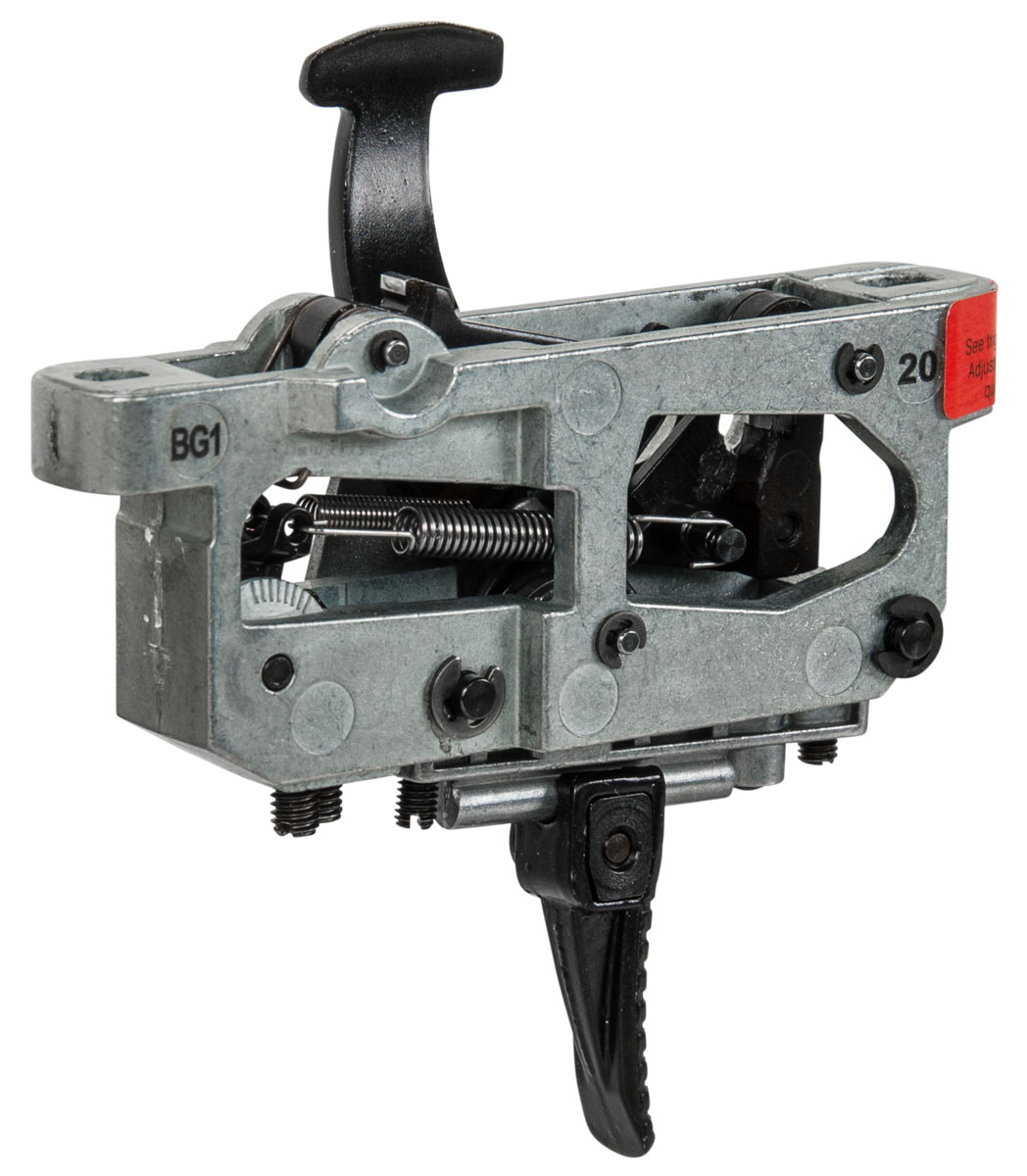
Anschutz 1827 F Two-Stage Trigger
The trigger on the Anschutz 1827 F consists of more than 50 parts working in unison for the sole purpose of a clean, consistent trigger break. The triggers are adjustable from 3.17 to 21.16 ounces (90 to 600 grams) and come from the factory preset to 17.63 ounces (500 grams).
The trigger blade comes in several styles and is easy to install and remove. The trigger blade also moves back and forth to adjust the reach.

Biathlon Rifle Ammunition
As with every other aspect of biathlon, the ammunition must conform to a strict set of regulations set out by the IBU. The bullets have to be made of lead or a lead alloy. The need to weigh between 2.55 and 2.75 grams (39.35 to 42.43 grains). The maximum muzzle velocity allowed is 1181 fps, measured 1 meter off the muzzle. They even regulate how hard the ammo is allowed to strike the target. The momentum of the bullets must be less than .1 kgm/s. I won’t bother converting that to English. The point is that the ammunition needs to operate within the confines of a well-defined performance envelope.
When vetting ammunition, serious rimfire shooters will test high-quality ammo, like Lapua Polar Biathlon and the newer Lapua Biathlon Extreme, by shooting 40- or 50-shot groups to determine which specific lot number works best in their rifle.
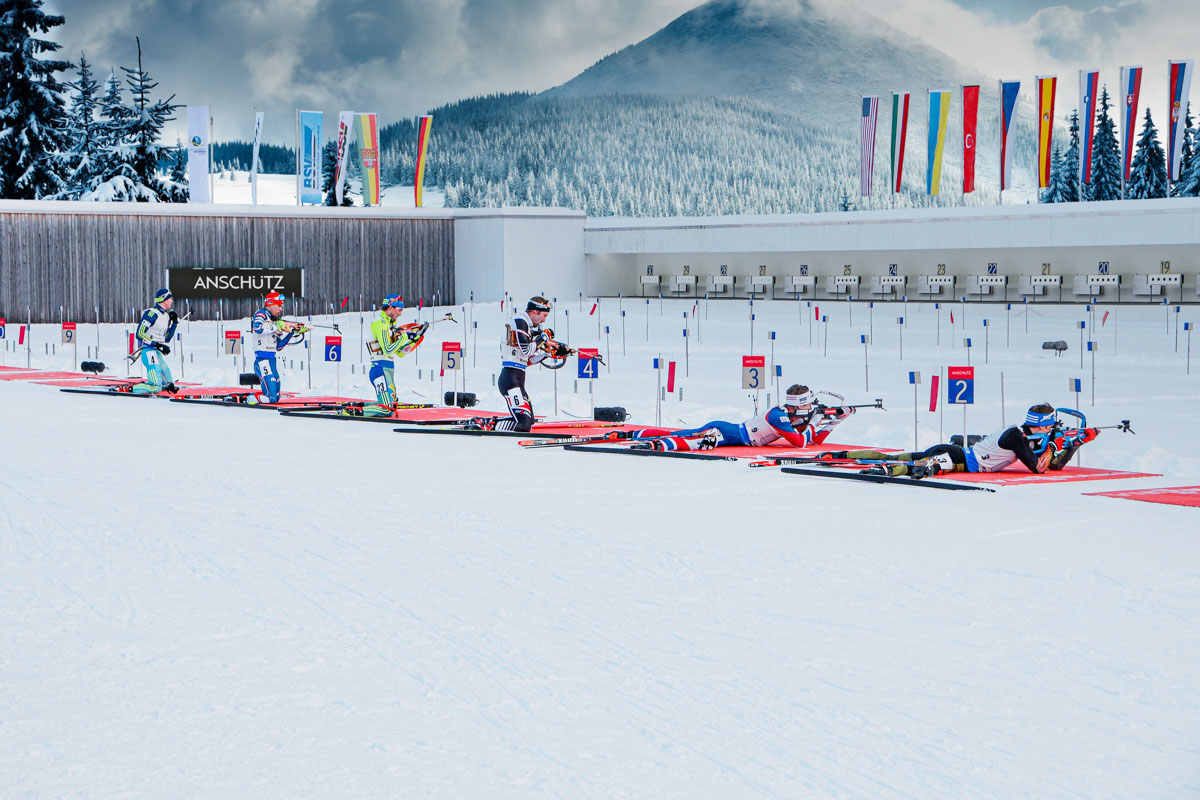
The Biathlon Rifle in Action
Biathlon races come in many different flavors. The types of competitions include Individual, Spring, Pursuit, Relay, Mass Start events. The distances skied, method of starting, shooting sequence, and penalties for missed shots vary from one event to the next. Sometimes the competitors alternate between prone and standing positions, while in other events the first two target arrays will be shot prone and the last two standing.
When the shooters miss targets, they incur a penalty. Either a set amount of time gets added to their overall race time (usually either 45 seconds or a minute) for each dropped shot or they have to ski a penalty loop that’s adds 75 or 150 meters to their race for each miss.
The targets are 50 meters downrange and consist of a row of five metal plates set within a rectangular frame. The targets are black circles 4.5 inches across and when they are hit a white metal plate flips up giving the shooter feedback that the shot was on the mark.
Read Next: The Best PRS Rifle Rig
Now, one of the things that makes biathlon so devilishly difficult is that you only get the full 4.5 inches of target when shooting off-hand in the standing position. When the shooters go prone, they still see the same 4.5-inch circle, but now their shots have to strike the center 1.8 inches of the target in order to count. (The targets have a mechanical plate that slides into position to constrict the target area.)
Cleaning those targets quickly with open sights is a reasonable challenge under the most relaxed circumstances. Add bitter cold and wind to the equation while your heart is hammering out of your chest at 180 beats per minute and you can appreciate the remarkable degree of athleticism and skill the Olympic biathletes possess.


